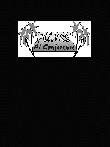Published:
May 1999
Proceedings:
Proceedings of the Twelfth International Florida Artificial Intelligence Research Society Conference (FLAIRS 1999)
Volume
Issue:
Proceedings of the Twelfth International Florida Artificial Intelligence Research Society Conference (FLAIRS 1999)
Track:
All Papers
Downloads:
Abstract:
Intelligent tutoring systems (ITS’s) have a rich history of helping students in certain scientific domains, like geometry, chemistry, and programming. These domains are ideal for ITS’s, because they can be easily represented and because the type of interaction between the student and the tutor can be limited to entering a few simple numbers, symbols, or keywords. Students need help in other areas, but without the ability to robustly understand a student’s input, ITS’s in these areas are inherently limited. Recently a technique called Latent Semantic Analysis has offered a corpus-based approach to understanding textual input which is not sensitive to errors in spelling or grammar -- in fact, it pays no attention to word order at all. We are using this technique as part of an ITS which promotes learning using natural human-like dialogue between the human and the student. This paper describes the tutoring system and Latent Semantic Analysis, and how they operate together. Then it describes our evaluation of LSA’s performance by comparing its judgments to those of human raters.

FLAIRS
Proceedings of the Twelfth International Florida Artificial Intelligence Research Society Conference (FLAIRS 1999)
ISBN 978-1-57735-080-4
Published by The AAAI Press, Menlo Park, California.
